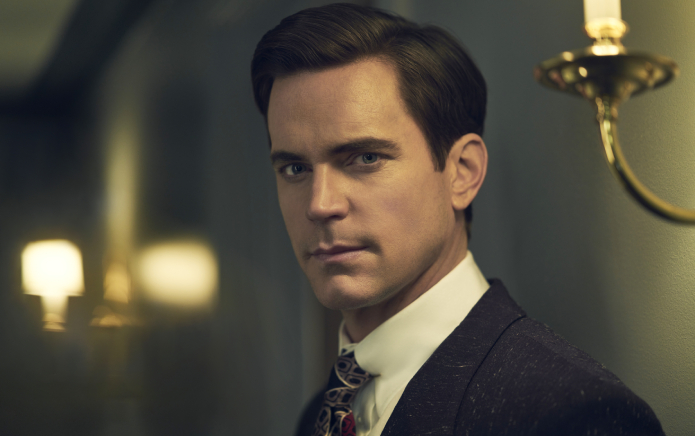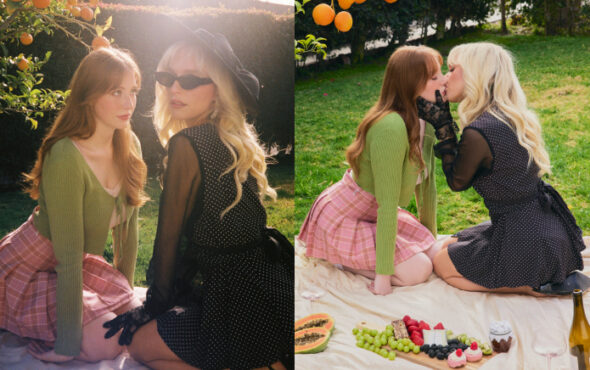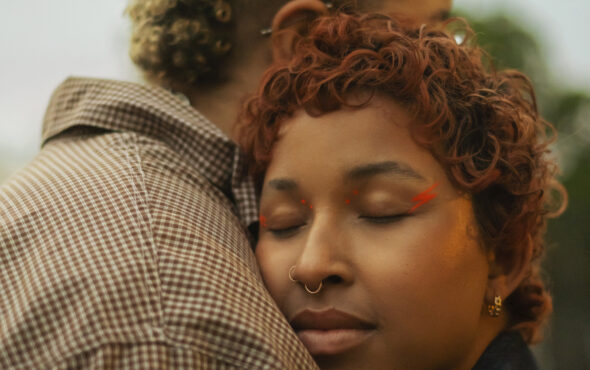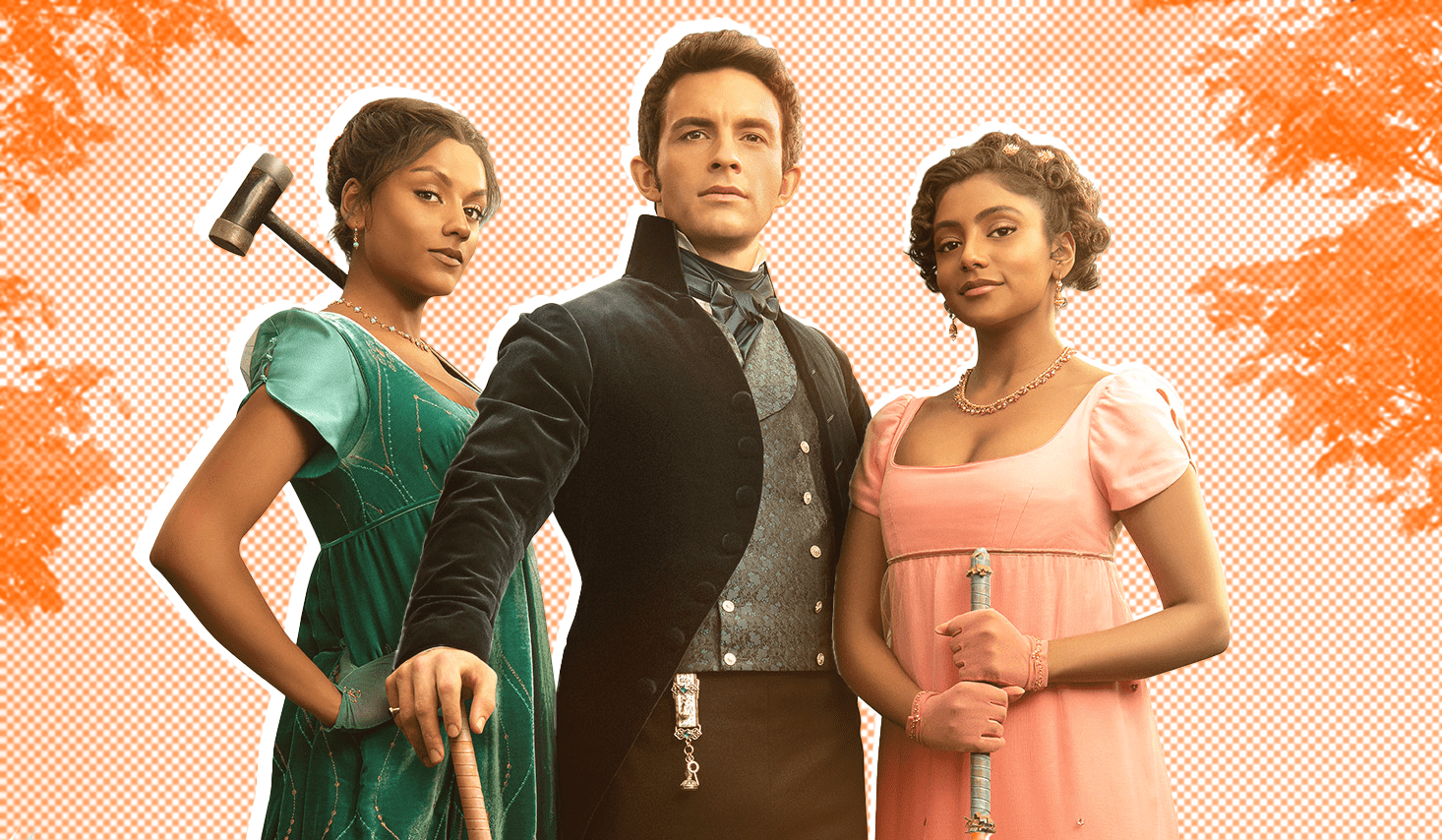
Fun fact: LGBTs existed in the 1820s. What a scandal! If you didn’t know that, gentle reader, then you have something in common with the writers of Bridgerton. After receiving criticism for its lack of LGBTQ+ representation in its debut outing, which subsequently became Netflix’s most-watched original series (at the time, Squid Game says hi!), the historical series has, sigh, failed to deliver the salacious queer drama we were hoping for in its second season. Or start to set it up at the very least.
The Shondaland-series, created by Chris Van Dusen, sees Jonathan Bailey as the new male lead following the departure of Regé-Jean Page, who memorably played the fan-favourite “fuckboy” Duke of Hastings, Simon Bassett. Season two follows Bailey’s character, Lord Anthony Bridgerton, the eldest Bridgerton sibling and Viscount, as he searches for a “suitable” wife. The Viscount has no luck, however, until he meets sisters Kate (Simone Ashley) and Edwina Sharma (Charithra Chandran), who arrive from India with their mother (Shelly Conn) to find a husband for Edwina. (That is all we’ll say, this is a spoiler free article!). Admittedly, we had a ball with these new episodes. Again, the performances are absolutely stellar – particularly from Bailey and Ashley, as well as returning stars Golda Rosheuvel, Adjoa Andoh and Nicola Coughlan – and the “will they, won’t they?” storyline between Anthony and the sisters made for compelling television.
Bridgerton also continued to cement its status as one of the campest shows on air thanks to the iconic voiceover from two-time Academy Award winner Julie Andrews and its extravagant, fantastical ensembles, as well as the wigs – my god, the wigs! This particular portrayal of Queen Charlotte is a runway challenge short of being a RuPaul’s Drag Race contestant. Let’s not forget the soundtrack, which sounds like it could plucked out of any queer millenial’s “pop anthems” playlist with intimate cover versions of Miley Cyrus’ Wrecking Ball, Pink’s What About Us, Rihanna’s Diamonds, Robyn’s Dancing On My Own and, one of the gayest songs in history, Madonna’s Material Girl. Oh, and spoiler alert: Anthony emerging from the pond was the definition of homoerotic camp. The definition! Sadly, while its reputation as one of the most diverse – and campest, it’s undeniable – shows remains intact, it’s not as progressive in regards to LGBTQ+ storytelling.
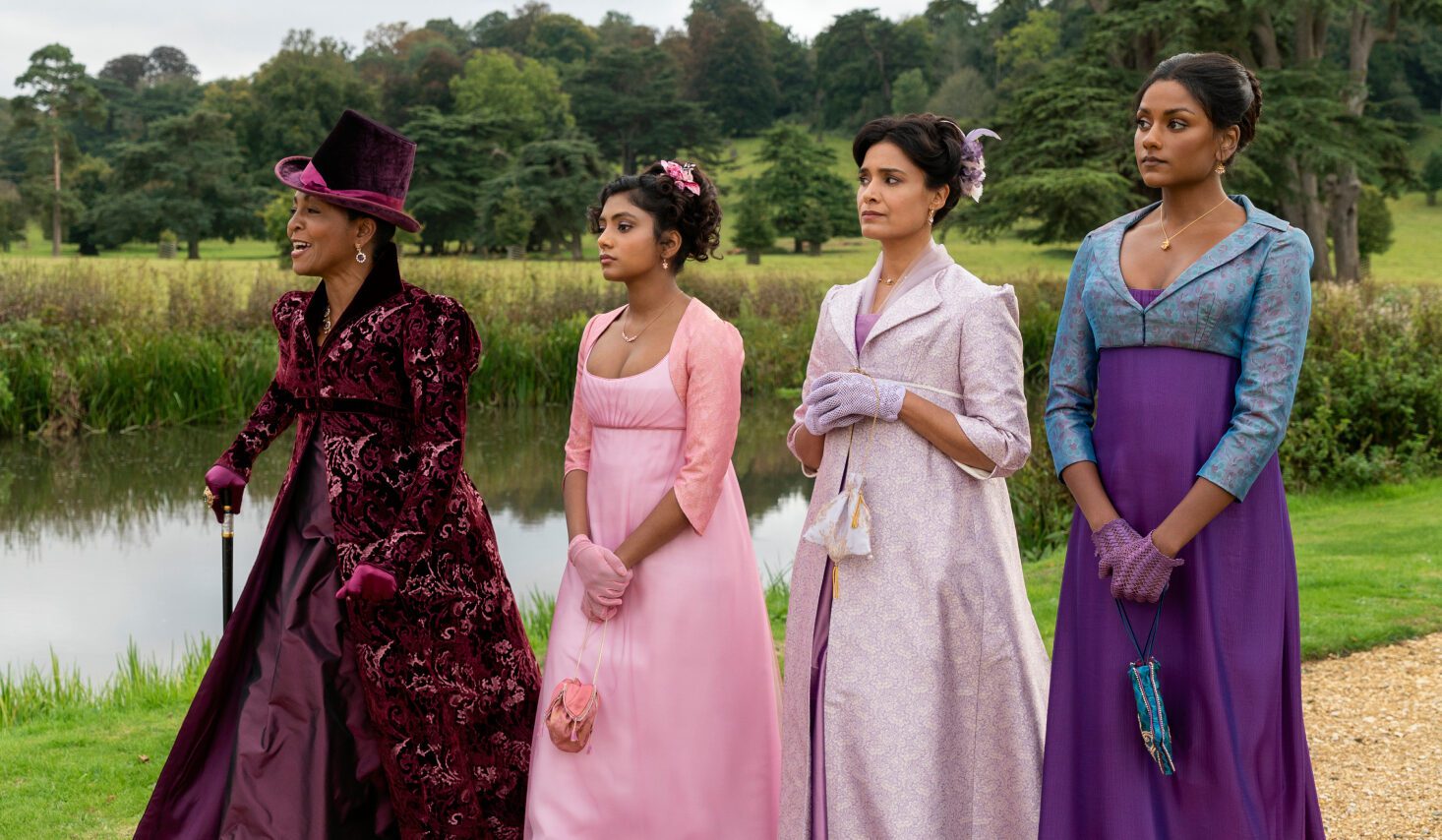
Based on the romance novels from Julia Quinn, Bridgerton is set in an alternate history with a racially integrated London, with some of the most prestigious characters in the competitive world of Regency era’s ton – such as Queen Charlotte (Rosheuvel) – played by actors of colour. As is the case with season one, Bridgerton deserves all the accolades for its depiction of race, particularly with the introduction of the Sharma family. With authentic South Asian representation still scarce on mainstream television, Bridgerton is one of the only scripted mainstream dramas to place three South Asian voices at the forefront. It’s not shoo-horned in either; Kate, Edwina and her mother are three-dimensional characters who advance the narrative and aren’t simply there to assist the progress of their white counterparts, such as Anthony. Netflix’s adaptation marked a major difference from the books, which failed to take a “colour-blind” approach. It begs the question: if the writers are willing to use their artistic licence to accurately represent a significant aspect of history, then surely they can do the same by depicting an inclusive, Regency-era London for LGBTQ+ people?
In recent years, television has witnessed a dramatic increase in TV shows with positive representation in their storylines, by-passing tired “queer trauma” tropes for something more insightful and progressive. Schitt’s Creek, The Haunting of Bly Manor and How I Met Your Father are just a few examples of how it has been done to spectacular effect. As one of the most streamed shows in the world, Bridgerton following in their footsteps would have a significant impact on viewers at home, especially those who identify as queer. Some reading this may think, ‘Not everything has to be LGBT!’ or ‘Watch an LGBT show instead, then?’ but the problem here is that, in this universe, it’s as if queerness has been completely erased.
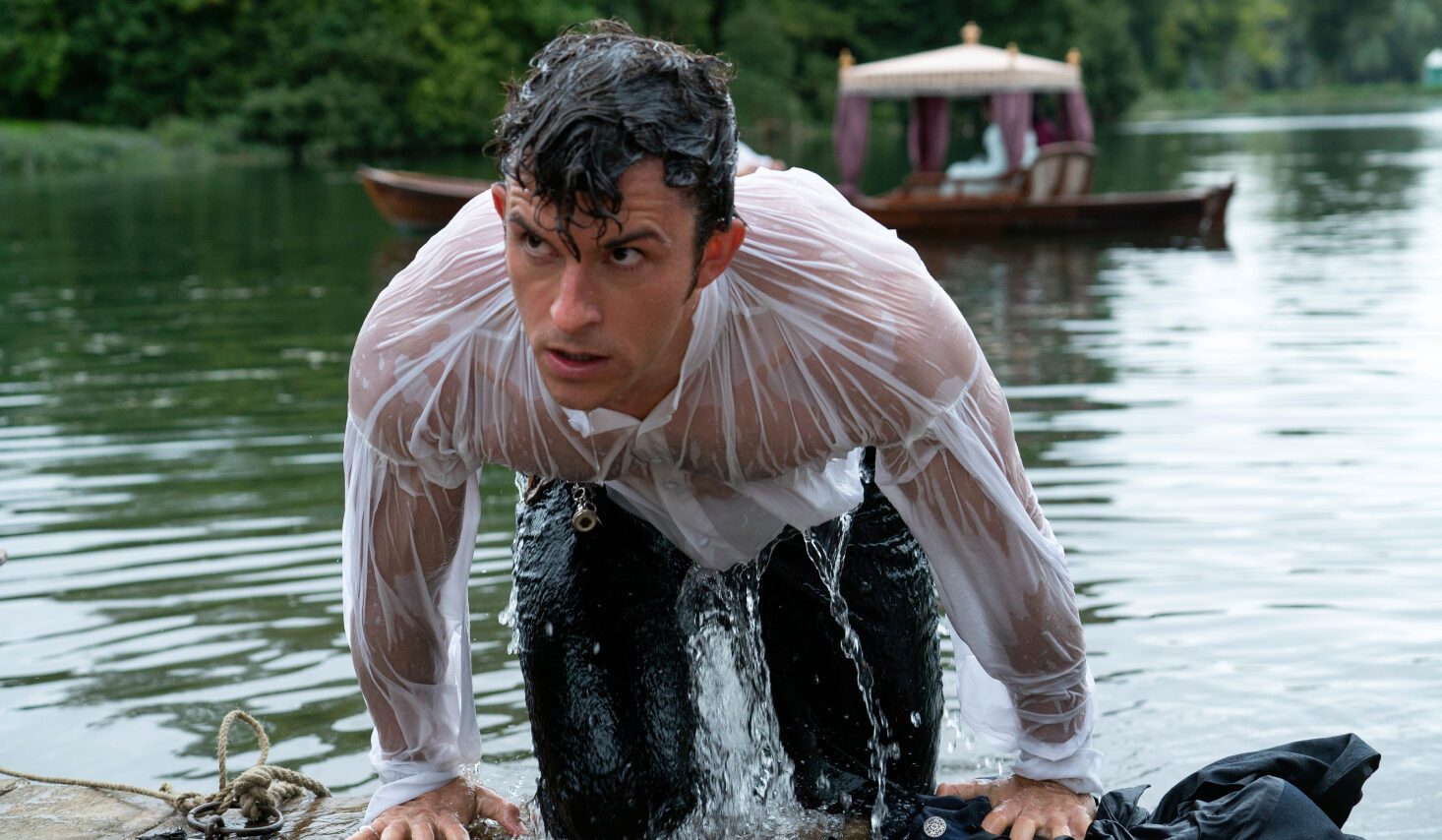
Despite running for eight, one-hour episodes, there isn’t a single queer person or narrative in season two. Not even a shot of two background actors of the same sex holding hands. It’s not as if it would be difficult to do, either? There’s plenty of main characters who could be at the forefront of a non-heterosexual storyline; particularly Eloise (Claudia Jessie), the fifth Bridgeron child with a resistance to fit into social norms and Benedict (Luke Thompson), the second Bridgerton son on a creative journey who likes to attend “alternative” parties, which pretty much describes half of East London. That brings us onto our next point. Although the first season teased a gay sex scene in the trailer, it didn’t come to fruition, leading to accusations of queer-baiting by viewers and several mainstream outlets. What we did receive, however, was a minor scene at one of the aforementioned “alternative” parties revealing Sir Henry Granville’s (Julian Ovenden) secret romance with Lord Wetherby (Ned Porteous). In a conversation with Benedict, Henry admitted that his marriage provided him and his wife with security and freedom, presumably due to conservative social constraints of the time. Sadly, both Henry and Wetherby were nowhere to be found in season two.
All would’ve been forgiven, however, if the season explored Benedict’s potential – as one viewer put it – “fruitiness”. While Thompson’s character didn’t participate in any of the queer activities, he had undeniable chemistry with Henry and, being the progressive artist he is, doesn’t judge his affair with Wetherby. It wasn’t a major plot point, but it was something. Speaking with Digital Spy and other outlets, Van Dusen – who left the series after producing season two – said of rumours surrounding Benedict’s sexuality: “With Benedict, he gets to be a part of this whole other world, this artsy space with all these colorful characters, and I think, as a second son, he’s been given a certain amount of freedom. It’s been so interesting for me to see what he’s been able to do with that freedom. So I hope definitely that the show will continue in that vein.” Kathryn Drysdale, who plays Benedict’s season one love interest Genevieve Delacroix, added: “There is a world where people openly explored their sexuality, and it wasn’t shameful. And I don’t know whether Benedict is just having his own sexual journey, and his own creative journey. Whether that takes him on that path or not, I actually don’t know.” With the first season celebrating intimacy with a variety of steamy same-sex love sequences, the erasure of queer love left a sour taste in the mouths of viewers. It implies that queer love isn’t as sacred.
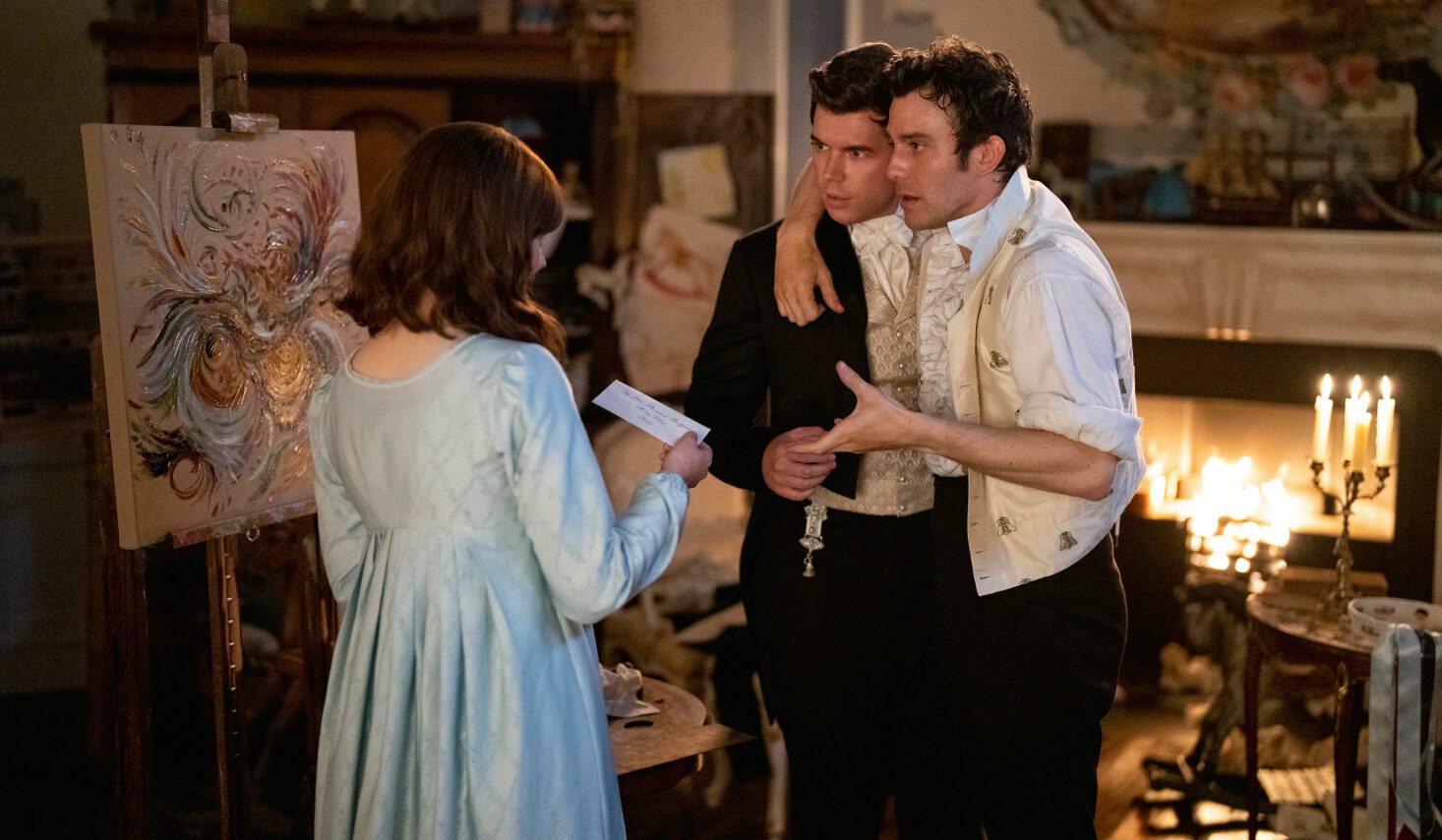
And there are plenty of period dramas that have delivered beautiful and timeless depictions of same-sex desire; from Anne Lister and Ann Walker on Gentlemen Jack to James Kent and Thomas Barrow on Downton Abbey, and of course, Emily Dickinson and Sue Gilbert, aka EmiSue, on Dickinson. Aforementioned shows were all set during the 19th/20th century, a period of history where LGBTQ+ relationships were considered taboo and queer people were forced to meet with one another in secret locations. The term “Molly House” came to be known in Georgian London to describe clubs, inns, taverns or even coffee houses as a safe space for homosexual men to socialise, discuss their identities and find sexual partners. Same-sex marriages were also performed, illegally of course, with wives often feigning shock at their “husband” being a female when their real sexual identity was uncovered. (Bridgerton adapting these would be, again, camp.) These are just a couple examples of LGBTQ+ people finding solace in a time where LGBTQ+ rights didn’t exist. So, it’s not as if the writers of Bridgerton are unable to find inspiration.
Admittedly, the series might be too far gone to introduce LGBTQ+ characters and narratives free of judgement, as they have done with their characters of colour. However, the show has proven that it’s not afraid to tackle inequalities of the time. Both seasons have explored sexism within Regency-era London, such as women not having much control over who they marry and, in one uncomfortable scene in season two – spoiler alert! – Anthony is shown having final say over whether his mother Violet (Ruth Gemmell), experiencing complications during birth, should survive or the baby. Kate Sharma, at the age of 26, is also told that she’s too old to find a suitor, whereas Anthony, age 28, is perfectly fine to continue courting women. There are many more instances of Bridgerton portraying inequality between the sexes, so, why not homophobia too? Although the book series is devoid of queer narratives (one of the later instalments includes a minor – we repeat, minor – gay character), the beauty of live-action adaptations of literature is updating them to make them relevant for modern audiences. Dearest gendle reader, queer people have always existed, and with the show officially renewed for a third and fourth season, it’s about time Bridgerton reflected that.
The second season of Bridgerton is now streaming worldwide on Netflix.
